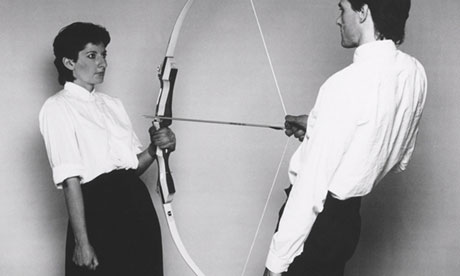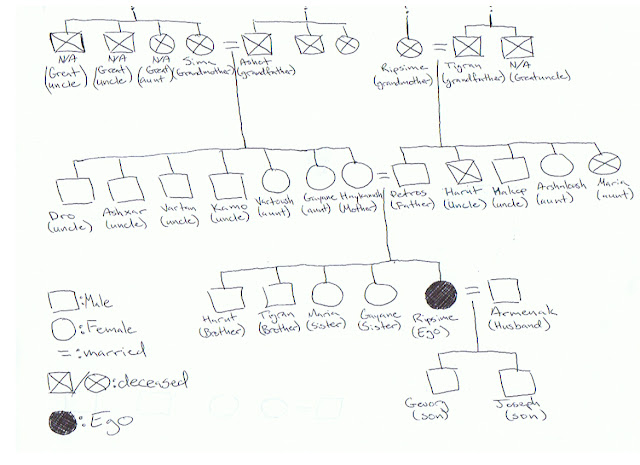Part 1: Different Subsistence Patterns
a)
Pros/Advantages
§
Agriculture
i.
With the rise of agriculture and farming
techniques, individuals were able to stabilize in one area and grow, leading to
greater reproductive fitness and advancing from primitive methods to modern
techniques.
ii.
Were able to grow enough food to feed the
community and were able to even have a surplus of food, for emergency situation
like when there are unfavorable conditions for harvest
iii.
Food supply is continuous as long as they keep
harvesting and conditions are favorable
§
Hunting and Gathering
i.
With hunting and gathering, the communities tend
to be very small, therefore there are a lot less mouths to feed, meaning the
work put in to find the food does not impede on the amount of food/energy gathered.
ii.
With these communities not having so many
“extra” people, all are equal in status and ranking.
iii.
Their food supply will always be available until
they either hunt down all of it in the area and use it up
b)
Cons/Disadvantages
§
Agriculture
i.
With the rise of agriculture, farmers in the
beginning would hire slaves to do the manual labor, and this then formed a
community where individuals were not equal in status and ethical issues arose.
This can still be seen today as farmers still hire immigrants to do the hard
manual labors while we flourish the fruits of their labor.
ii.
Sometimes the habitat that the individuals live
in experience unfavorable conditions for farming meaning that these communities
are taking a risk in maybe not having food during that season
iii.
With farming, there are greater factors that can
damage the harvest, like insects/pests, plant and livestock disease,
environment (i.e drought, winter, not enough sun light), etc.
iv.
Much more work needs to be put into taking care
of harvest and livestock
§
Hunting and Gathering
i.
Individuals living in such communities will not
have enough energy or food supple to be able to advance and grow like
agriculture communities, leading to a low reproductive fitness
ii.
They can use up all the food supple from one
area, thus leading to them living a nomadic lifestyle and always being unsure
if the next location will be abundant in any type of food supply
iii.
With this nomadic lifestyle they increase their
risk of predator attacks, sickness, and death
c)
Which one is healthier?
§
There are many factors to take into
consideration to determine which of the two subsistence patterns are healthier,
but at the end is has to be agriculture. The reason why we are all here
today, with prolonged life expectancies is because of the rise of farming and
being able to manage our own livestock. If we also just take a look into the
food supply itself, agriculture is healthier in many aspects. For example,
true, protein is a major source of energy and is need for normal development
however our bodies are designed to utilize certain enzymes to breakdown
proteins and fats, and these enzymes come from vitamins that are sometimes only
found in vegetables and byproducts from live stock (eg. Vitamin D from milk).
In addition, agriculture developed systematic methods to grow and harvest crops
and livestock so this allowed enough food so malnutrition was not a concern.
However, there are some drawbacks because livestock were raised within the
community humans were more susceptible to disease. Still, we overcame that
boundary and are now here today because someone realized they can grow their
own food.
d)
The reason why early humans decided to
transition from hunter and gathering methods to acquiring food to an
agriculture lifestyle is due to many factors. One of the simple factors I can
think of is that some individuals were just not good at hunting, plain and
simple. Those who could not catch their own food risked their reproductive
fitness, so a new method was established, instead of going to the food they
brought the food to them. Another reason might have been that there was just
not enough food to go around. This lead them to devise another way to produce
more food to greater increase their reproductive fitness.
Part 2: Different Economies
a)
With the rise of agriculture, communities were
able to harvest and collect a surplus of food. This lead them to utilize and
develop another technique other than farming; trading. They traded food for
tools, clothes, livestock, and weapons, however the important thing here is
that it is because of the extra food that these communities harvested that
allowed them to trade. Therefore, the statement that there is a direct
correlation between surplus of food and trading holds true. Not only is the
surplus of food used as trading items, but the surplus of food is what has
helped advance the community to the stage of utilizing trade. With hunter and
gathers we do not see settled, advanced communities developing their culture,
however with agriculture people have the resources now to settle down and grow
into advance communities with more developed cultures and economic systems.
b)
Other than benefiting from acquiring items that
you typically don’t have access to, trading provides social benefits as well. One
benefit developed from trading between two different communities is the
formation of closer bonds between them. Having these two different cultures
trading and bartering allows for them to get to know and understand one
another. This will further lead them to become allies, and further develop and
advance. Another beneficial factor that comes with trading is the development
of one’s self. Unlike in today’s modern society where the main form of
transactions are carried out online, early humans 12,000 years ago and still in
other places around the world today, transactions were and are carried out
through human-to-human interactions. This type of social interaction leads to
one’s self developing personality, and skills in interacting with people.

c)
With the advancement of society and culture due
to agriculture and trading, humans did not only reap the benefits, but also the
negative aspects that came with trading. Looking specifically at the social
aspect, one obvious problem is jealousy. Still, today different communities are
not satisfied with what they have, and even what they get out of the trade that
is carried out. As this jealousy continuous, cultures start to form enemies due
to the jealousy of the other culture’s resources. Another negative social
aspect that came with development of trading was a shift in status. With
trading, those who did not have enough to trade became peasants, but those who
had things to trade became powerful.
d)
With the rise of agriculture, humans 12000 years
ago started to develop and advance. This growth then led to the development of
trading and bartering. With agriculture there is only so much one community can
harvest per year, therefore communities started to seek other communities that
possessed items that they did not. With having a surplus of food, and other
communities having none, humans realized that this surplus did not have to go
to waste and could have more value to other communities that were lacking in
food supplies. This led to trading between communities and those who developed
farming techniques before others would have an advantage because they where the
ones who would set out and trade for things that would help advance their
community.






